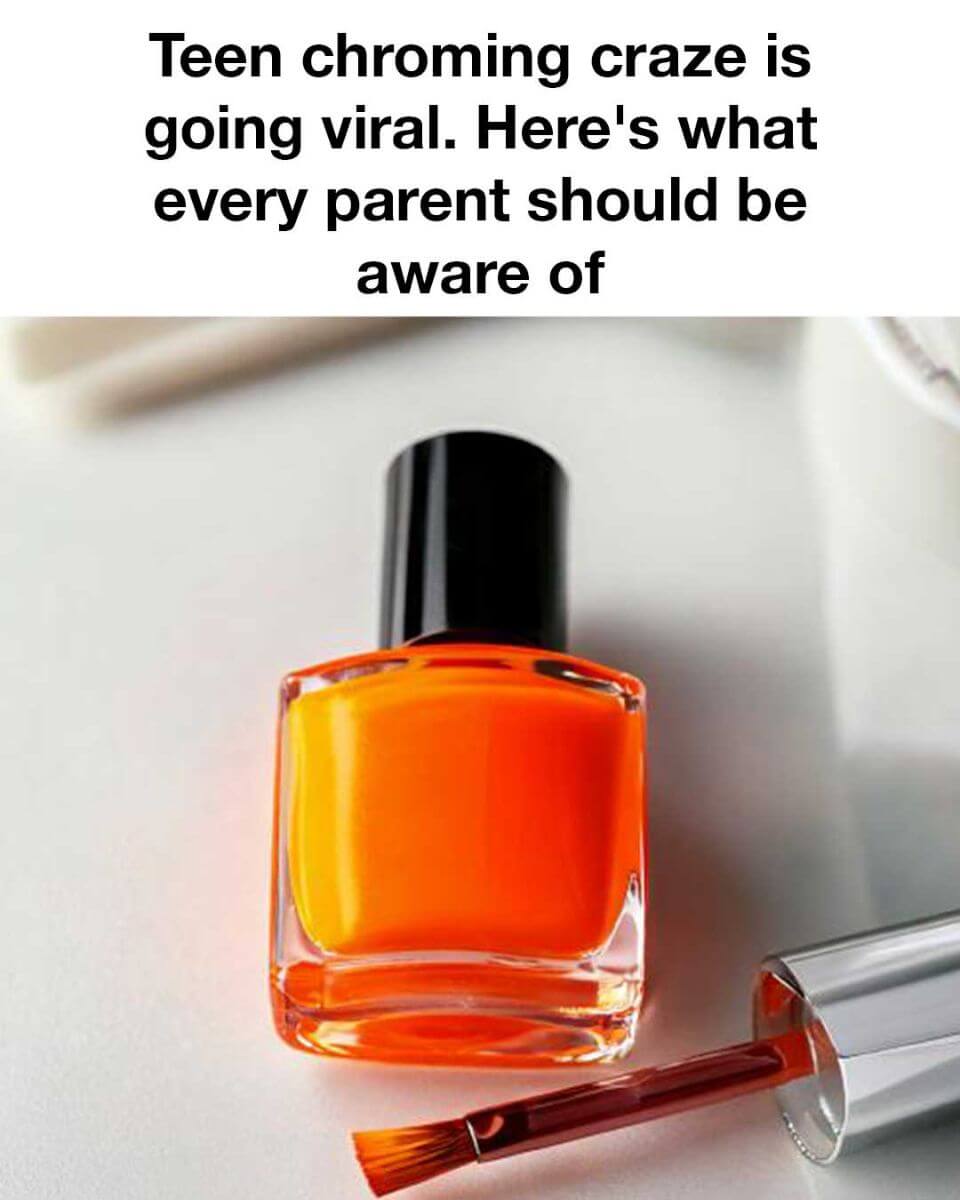In recent times, a disturbing trend called “chroming” has emerged among teens, drawing serious concern from parents, educators, and healthcare providers. Chroming, a type of inhalant abuse, involves breathing in fumes from aerosol products and has become increasingly popular due to the ease of access and the brief high it produces. With its rapid spread across social media, it’s vital for parents to understand what chroming is and how to protect their children from its harmful consequences.
Understanding Chroming: What It Is and How It Works
Chroming refers to the inhalation of vapors from common household items like spray paint, nail polish, deodorants, and other aerosol-based products to experience a short-lived euphoric high. The term originally came from chrome-based sprays but now includes many chemical-laden aerosols. These substances, when inhaled, can cause sensations ranging from dizziness and exhilaration to hallucinations and motor control loss. Since the high doesn’t last long, some teens engage in the behavior repeatedly to extend the effects.
The Rise of Chroming: How It Went Viral
The popularity of chroming has been fueled by its glorification on social media, where videos and posts often showcase the act while minimizing its risks. Many teens, lured by curiosity or peer pressure, experiment with chroming without realizing the serious dangers. The widespread and anonymous nature of social media has allowed this trend to grow rapidly across different communities, turning it into a worldwide issue.
Health Risks and Dangers Associated with Chroming
Chroming presents serious health risks that range from immediate effects to long-term damage. Breathing in toxic fumes can trigger sudden sniffing death syndrome, a potentially fatal heart condition. Short-term dangers also include vomiting, nausea, and asphyxiation. Repeated use may cause irreversible harm to critical organs like the brain, lungs, liver, and kidneys. Impaired coordination during and after inhalation also raises the likelihood of accidents and injuries.
Psychological and Social Impacts on Teenagers
Besides its physical dangers, chroming can seriously affect a teenager’s mental health and social life. The repeated pursuit of a high can lead to addiction, negatively impacting school performance and straining family relationships. The shame tied to substance use can isolate teens, leaving them more vulnerable to depression and anxiety. Recognizing these psychological consequences is key to offering appropriate support and guidance.
Warning Signs Parents Should Look Out For
Parents should stay alert to signs that their teen might be involved in chroming. Look for unexpected aerosol cans, chemical smells on breath or clothes, unexplained paint marks on the face or hands, and unusual shifts in mood or behavior. Physical symptoms like frequent headaches, rashes, or nosebleeds can also be indicators of inhalant use. Detecting the problem early is crucial to preventing long-term harm.
How to Talk to Your Teen About Chroming
Talking to your teen about chroming requires empathy and understanding. Begin by educating yourself and then express concern for their well-being in a calm, non-judgmental way. Keep the lines of communication open so your teen feels safe discussing difficult topics. Highlight the real risks of chroming and help them find healthier ways to deal with peer pressure or stress.
Preventative Measures and Safety Tips for Parents
Parents can take a number of steps to keep their children safe from chroming. Secure or limit access to household products that could be misused. Have ongoing conversations about the dangers of inhalants. Create a home environment where kids feel comfortable talking about their experiences. Encourage involvement in clubs, sports, or hobbies that build confidence and provide healthy peer interactions. It’s also wise to be aware of their digital presence and talk about how online content can influence choices.
Resources and Support for Concerned Parents
For those needing guidance, many organizations provide help. The National Institute on Drug Abuse (NIDA) and local health departments offer educational materials and support. Counseling services and peer support groups can benefit both parents and teens. Schools and community programs may also run workshops aimed at prevention and raising awareness about the dangers of substance abuse.
Conclusion: Staying Informed and Protecting Your Teen
With chroming posing a growing threat to youth, it’s more important than ever for parents to stay informed and engaged. Understanding the risks and fostering open conversations can make a meaningful difference. By promoting safer choices and creating a supportive environment, parents can empower teens to navigate challenges, resist risky behaviors, and prioritize their well-being.
